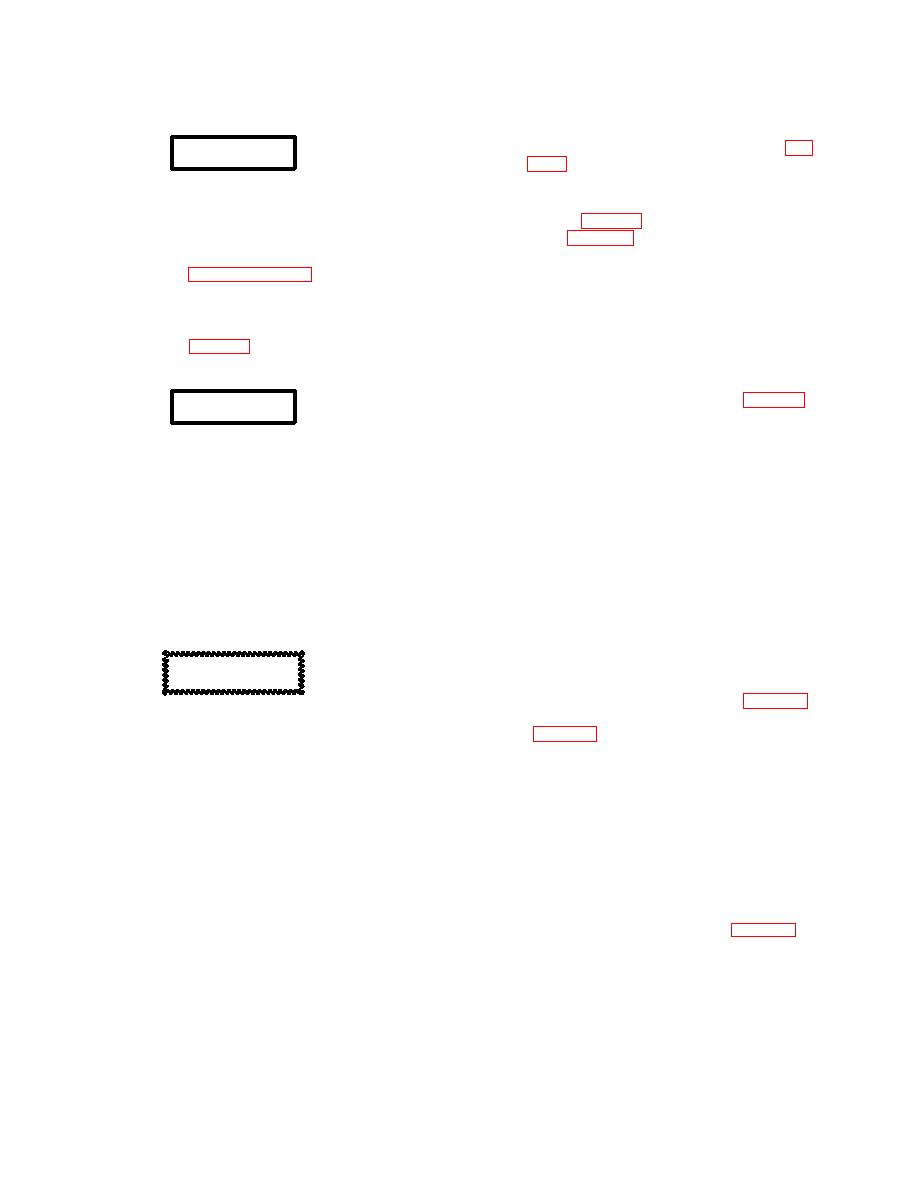 |
|||
|
|
|||
|
Page Title:
Verify Preliminary Safety Procedures. |
|
||
| ||||||||||
|
|
 TM 55-1520-238-S
214.4 Verify Preliminary Safety Procedures.
a. Unlock Tail Wheel Swivel. Push swivel
lock lever down to release tail wheel swivel
lock. Install tail wheel lock safety pin (fig.
WARNING
To prevent fire or explosion, verify that
b. Install Tail Wheel Steering Bar and
armament, canopy jettison, fuel and
Winching Yoke. Connect winching yoke
electrical systems are safetied on each
(item 8, table 21) to tail landing gear wheel
helicopter prior to loading.
fork (fig. 214). Tighten yoke studs onto
ends of tail wheel axle. Install steering bar
Check and ensure performance of all Preliminary Safety
in yoke tube.
Procedures listed in paragraph 210.2.
214.5 Load Four Hellfire Launchers. Position two
NOTE
Hellfire launcher containers on left center area of aft
Tail wheel steering bar will be used to
ramp. Place the other two launcher containers on top
steer helicopter and to keep main and tail
first two containers (fig FO1).
wheels on loading ramps.
c. Place Shoring. Place two stacks of ap-
proach shoring 70 inches apart (fig. 211).
WARNING
Each stack should consist of:
To prevent injury to personnel and
(1) One piece of 2 x 12 x 72 inch lumber.
damage to helicopter and cargo air-
(2) Four pieces of 2 x 12 x 48 inch lumber.
craft from helicopter rolling free, the
(3) One piece of 2 x 12 x 24 inch limber.
helicopter will be restrained with
chains and wheel chocks prior to re-
(4) Two pieces of 12 x 12 x 3/4 inch ply-
leasing tension on winch cable.
wood.
To prevent injury to personnel and
(5) One strip of 12 x 228 x 1/2 inch plywood
damage to helicopter and cargo air-
to protect stow roller conveyors on car-
craft in the event of winch failure, the
go aircraft ramp extension.
helicopter CPG station will be occu-
d. Aline Helicopter at Shoring. Position
pied by a qualified person to operate
brakes.
helicopter main landing gear wheel to aline
with approach shoring.
e. Connect Cargo Aircraft Winch Cable to
CAUTION
Helicopter. Couple hooks on forward
winching adapter cable (item 7, table 21)
To prevent damage to helicopter and
to helicopter main wheel arm inboard eyes
cargo aircraft, chocks shall be used
to prevent the helicopter from mov-
direct coupling of the forward winching
ing past the stated cargo aircraft fu-
adapter cable to cargo aircraft winch cable
selage station.
and take up cable slack.
To prevent damage to helicopter and
f. Assign Personnel. Assign loading team
cargo aircraft, ensure that rotor
members to; monitor ramp crest, overhead
head and tail rotor are properly posi-
and sidewall clearances, operate tail wheel
tioned prior to approaching cargo
steering bar and operate helicopter brakes.
aircraft.
g. Winch Helicopter. Winch helicopter onto
To prevent damage to helicopter and
approach shoring and up cargo ramp. Stop
cargo aircraft, use shoring as nec-
helicopter when main gear tire reaches C5
essary under helicopter main and
fuselage station (FS) FS 450 (fig. FO1).
tail wheels to provide clearance be-
h. Apply Brakes. Apply helicopter brakes
tween helicopter underbelly and
and attach safety chains.
cargo aircraft ramp hinge.
222
|
|
Privacy Statement - Press Release - Copyright Information. - Contact Us |